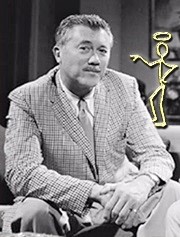
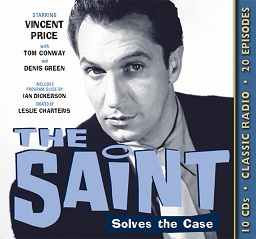 The Saint (1945, 1947-51) aired “The Birds and Bees of East Orange” on March 18, 1951. We have run only six previous episodes of this fine show, this episode being only the second since November of 2019, almost three years ago. For new listeners I borrow freely from past episodes’ opening remarks as they deal with the creator and partial history of The Saint on radio, in print, and on film. It is estimated there were in the neighborhood of 157 unique (i.e., original) episodes (depending on which historian you talk to) of which approximately 57 are in circulation.
The Saint (1945, 1947-51) aired “The Birds and Bees of East Orange” on March 18, 1951. We have run only six previous episodes of this fine show, this episode being only the second since November of 2019, almost three years ago. For new listeners I borrow freely from past episodes’ opening remarks as they deal with the creator and partial history of The Saint on radio, in print, and on film. It is estimated there were in the neighborhood of 157 unique (i.e., original) episodes (depending on which historian you talk to) of which approximately 57 are in circulation.
Crime and mystery novelist Leslie Charteris’ (photo top right, 1907-1993) famous detective Simon Templar was dubbed The Saint by the underworld, though he was hardly what the monicker implied. The story goes that he came by the name because of his initials, S. T.. The Saint, as a radio show (there were movies, TV shows, novels, and even comic books), ran first in 1945, and then from 1947-1951, with almost all episodes featuring the incomparable Vincent Price (photo lower right, 1911-1993). Before Price assumed the role of The Saint, there were two others before him, beginning with the 1945 run: Edgar Barrier (January-March 1945) and Brian Aherne (June-September 1945). With the rare episode where actor Barry Sullivan would fill in, Vincent Price was the voice of The Saint from July 9, 1947 through May 20, 1951. The final 22 episodes after Price departed saw actor Tom Conway as The Saint, from May 27, 1951 through October 21, 1951.
The first Saint novel was published in 1928 when Charteris was just shy of his 21st birthday and was titled Meet the Tiger. In later years Charteris practically disowned the novel, remarking that it was so poorly written he wondered how it ever got published. Instead, he preferred to count 1930’s second Saint novel Enter the Saint as the first true Saint novel. Be that as it may, he would write Simon Templar 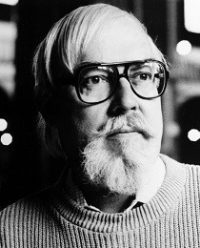 adventures (novels, short stories, and novellas) off and on for the next 33 years, the final Saint book written solely by himself being a collection of stories in 1963 titled The Saint in the Sun. Thereafter, all of the Saint titles would be ghost-written but credited to Charteris, who remained in an editorial capacity, reading the manuscripts and editing where necessary. Of interest to science fiction readers is that the first of the ghost-written Saint novels was written by none other than Harry Harrison (1925-2012, SFWA Grand Master 2009, photo at left), and was 1964’s Vendetta for the Saint. Harrison, also an illustrator early in his career (the legendary Wally Wood would ink Harrison’s pencils for several SF comics, among them Weird Fantasy and Weird Science), also wrote the syndicated The Saint comic strip.
adventures (novels, short stories, and novellas) off and on for the next 33 years, the final Saint book written solely by himself being a collection of stories in 1963 titled The Saint in the Sun. Thereafter, all of the Saint titles would be ghost-written but credited to Charteris, who remained in an editorial capacity, reading the manuscripts and editing where necessary. Of interest to science fiction readers is that the first of the ghost-written Saint novels was written by none other than Harry Harrison (1925-2012, SFWA Grand Master 2009, photo at left), and was 1964’s Vendetta for the Saint. Harrison, also an illustrator early in his career (the legendary Wally Wood would ink Harrison’s pencils for several SF comics, among them Weird Fantasy and Weird Science), also wrote the syndicated The Saint comic strip.
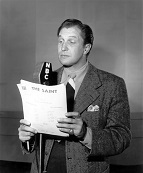
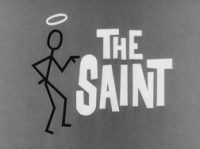 Simon Templar falls into the camp of the “soft-boiled” detective, in line with such as Nero Wolfe, Sherlock Holmes, and Dashiell Hammett’s Nick Charles (who prefer solving crimes with their wits rather than their fists), as opposed to the “hard-boiled” branch of the detective tree and the likes of Sam Spade, Phillip Marlowe, and Boston Blackie. The iconic stick figure with halo representing The Saint was first introduced in the early stories as a calling card Templar would leave so that his enemies would know who was responsible for their downfall. The title card/logo above was used in the 1960’s The Saint TV series starring future James Bond star Roger Moore. The TV series originated in the UK and ran from 1962-69, but was picked up by NBC in America and ran as a summer replacement in 1966.
Simon Templar falls into the camp of the “soft-boiled” detective, in line with such as Nero Wolfe, Sherlock Holmes, and Dashiell Hammett’s Nick Charles (who prefer solving crimes with their wits rather than their fists), as opposed to the “hard-boiled” branch of the detective tree and the likes of Sam Spade, Phillip Marlowe, and Boston Blackie. The iconic stick figure with halo representing The Saint was first introduced in the early stories as a calling card Templar would leave so that his enemies would know who was responsible for their downfall. The title card/logo above was used in the 1960’s The Saint TV series starring future James Bond star Roger Moore. The TV series originated in the UK and ran from 1962-69, but was picked up by NBC in America and ran as a summer replacement in 1966.
On American radio, however, Vincent Price was the undisputed, one and only Simon Templar, The Saint. His velvety voice and witty banter embodied the proto-typical suave, bon vivant hero/detective, though in a number of episodes the sexual innuendos written for not only his lines, but those of other characters were a bit too risque and obvious for the perceived audience in the late 1940s, though The Saint‘s legion of fans didn’t seem to care.
“The Birds and Bees of East Orange” revolves around a book, a book sharing its title with that of this episode. A young female bookstore owner notices that this particular book is being checked out by the same three people in rotation, and feels this odd enough to get Simon Templar involved. When the owner and Templar return to the bookstore they find a body and the game is afoot. Who is checking out this oddly titled book (some believe the title is rather scandalous to begin with, which only adds to the mystery), and why? What did the murdered man have to do with it, if anything, or did he just happen to be in the wrong place at the wrong time? And when the book goes missing…. Take a listen to this curious whodunit, a prime example of the thinking man’s detective in action.
(The linked CD at top of page includes “The Birds and Bees of East Orange.”)
Play Time: 29:31
{The Saint was broadcast from 4:30-5:00 PM on Sundays in April of 1951. Following school the following day the neighborhood gang met at the nearby newsstand for more detective or page-turning adventure stories they could never seem to get enough of. Black Mask (1920-51) began by publishing a wide array of pulp fiction until 1926 when editor Joseph Shaw narrowed its focus to detective fiction. It has since been heralded according to one source as the “finest detective pulp magazine ever published.” In its final year it was a bi-monthly with the July issue being its last. The Phantom Detective (1933-53) was created as a not too subtle response to the success of The Shadow magazine. With a 20-year run it was obviously a successful gambit. It ended as a quarterly in 1951. Super Science Stories (1940-43, 1949-51) paid its writers less than a penny a word in its first incarnation, but 19-year old editor Fred Pohl managed to acquire stories from some of his Futurian friends, as well as Isaac Asimov and Robert Heinlein. With its second short run from 1949-51 and a new editor following the war, the magazine published a mix of original and reprint stories. Never considered a top-tier SF magazine, it nevertheless exuded its own kind of charm and a few critics, in retrospect, have praised its importance to the field in general, citing not only some of its stories but its role as an important training ground for a number of authors who would go on to make names for themselves. It managed 4 issues in 1951, the first as a quarterly and the final three as bi-monthlies.}
[Left: Black Mask, 4/51 – Center: The Phantom Detective, Spring/51 – Right: Super Science Stories, 4/51]
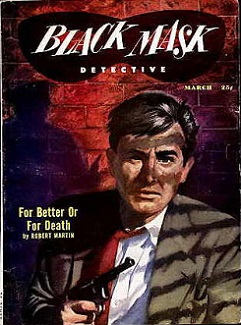
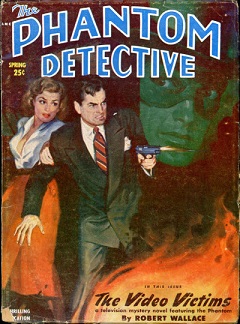
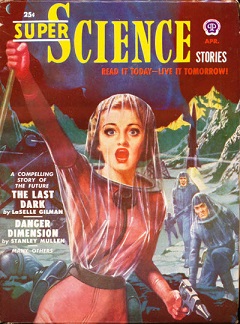
To view the entire list of weekly Old Time Radio episodes at Tangent Online, click here.